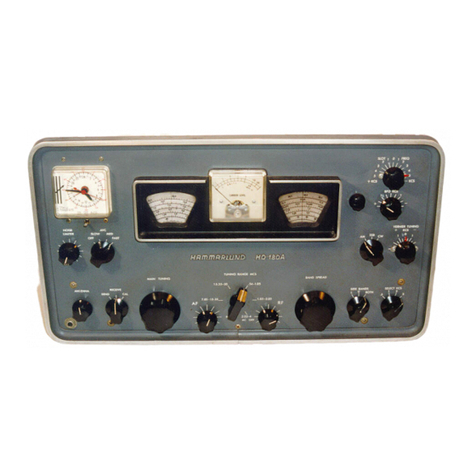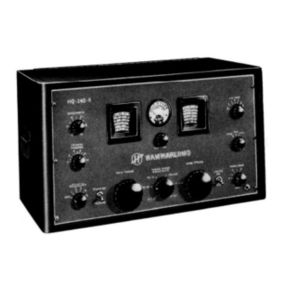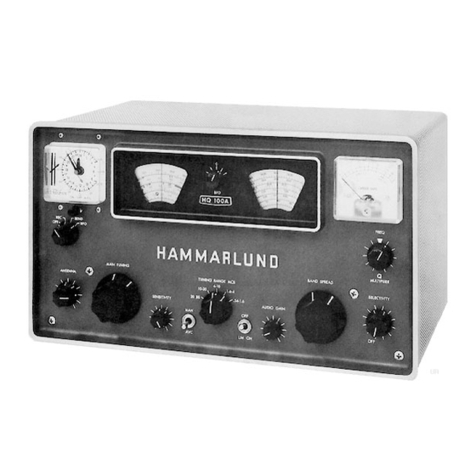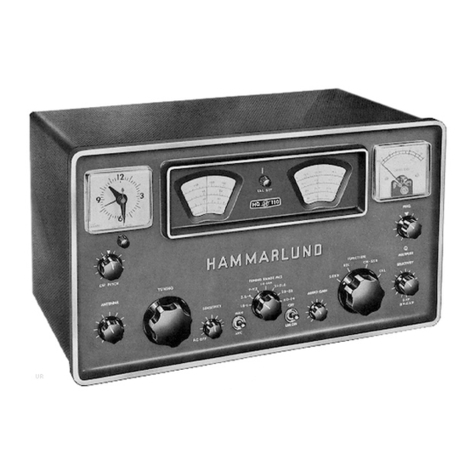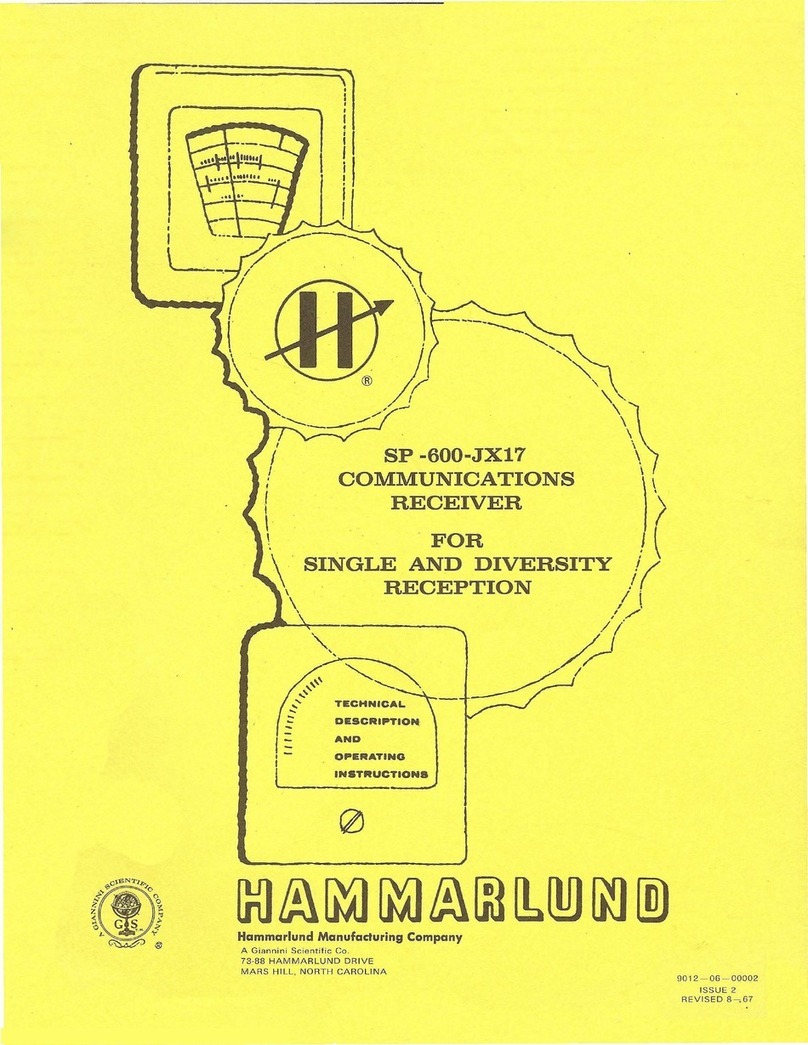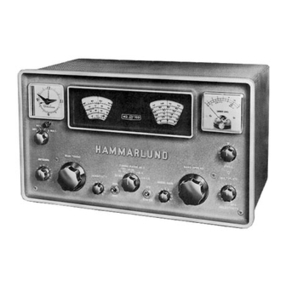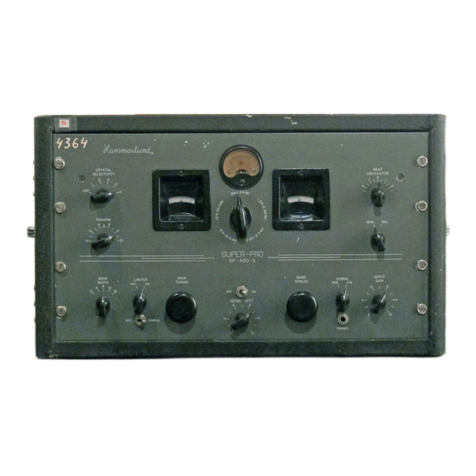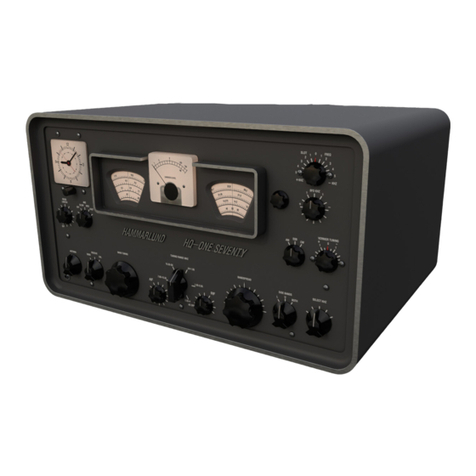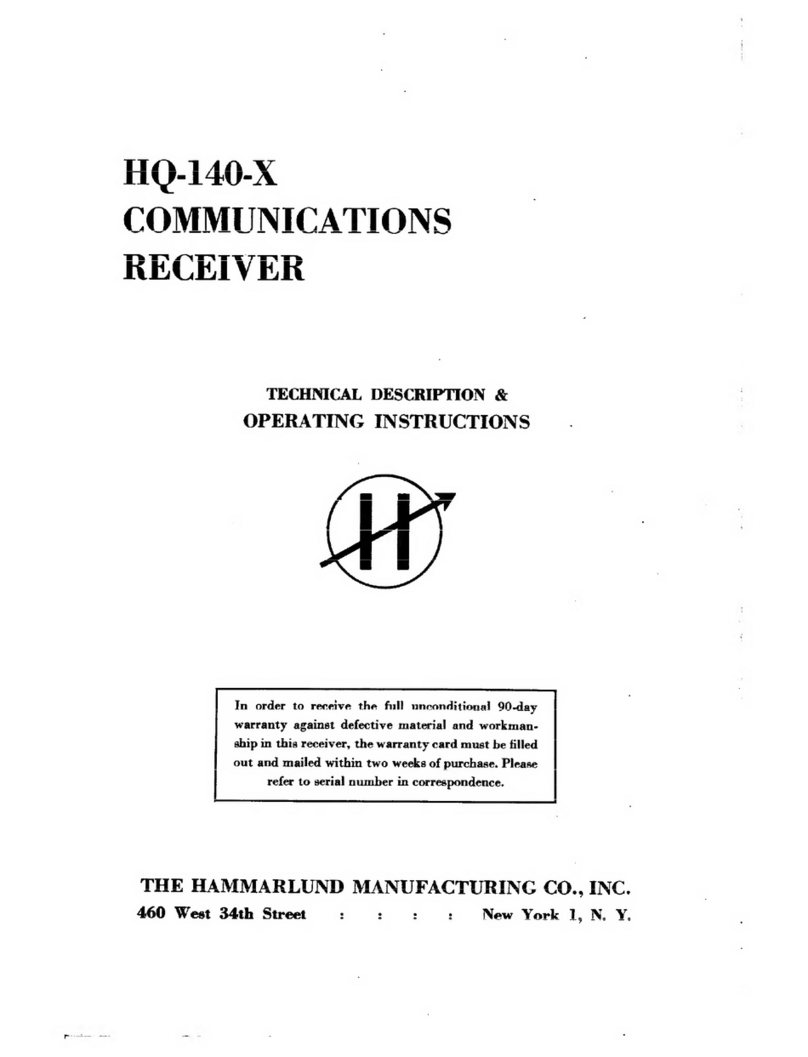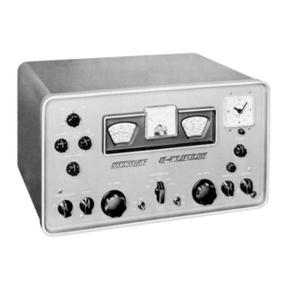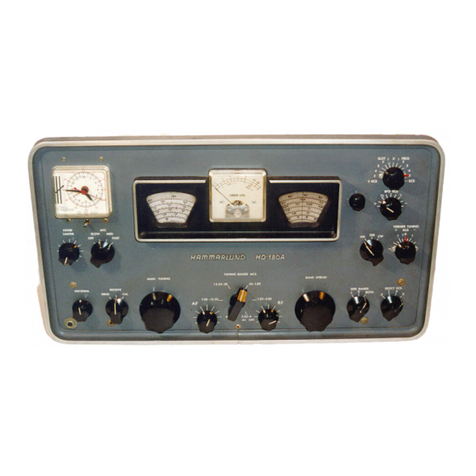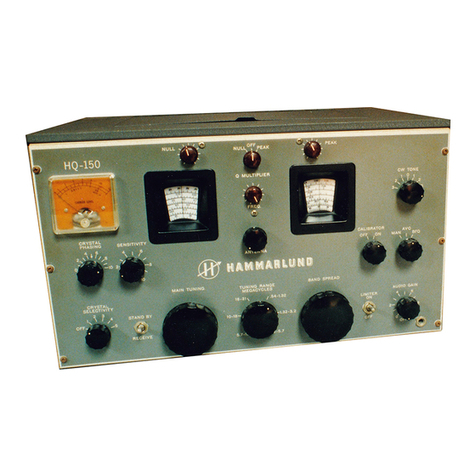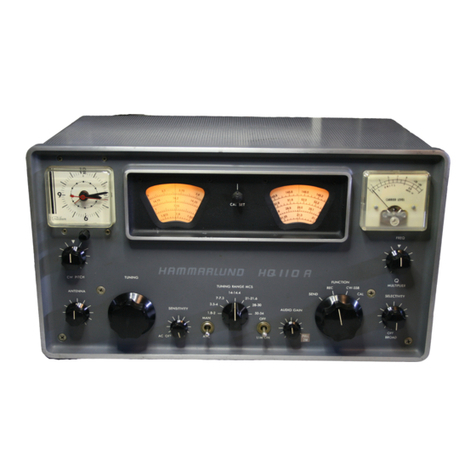SECTION
II
CIRCUIT
DESC1UPTION
General
The
electrical
circuitry
ot
the
SP.600-JX-17
is
sho~
schematically
1n
Figure
9.
A
block
diagram,
Figure
2,
is
provided
to
illustrate
the
arrangement and
functions
of
the
various
circuit
sections.
The
location
of
the
vEtrioustubes
is
shown
in
Figure
3.
The
circuit
for
single
conversio~,
used
for
signal
frequencies
up
to
7.4
megacycles,
consists
of
two
stages
of
RF
amplification
Vl
and
V2;
First
Mixer
V5;
First
Heterodyne
Oscillator
V4;
four"stages
of
IF
~lificat1on,
V7,
V9,
V10
and
Vll;
Detector,
AVe
Rectifier
V14;
Noise
Limiter
V15j
Beat Frequency
Oscillator
V13i
IF
output
and
AF
amplifier,
v16A
and
v16B;
Output Power Stage Vl7, and
the
Pavel'
Supply System which
includes
BPower
Rectifier
V19,
CBi.as
Rectifier
C20
and Voltage
Regulator
v18.
In
the
circuits
for
double conversion, used
tor
signal
frequencies
above
7.4
megacycles
the
Second Mixer v6 and Second Heterodyne
Oscillator
Va
are
substituted
tor
the
gate
tube
V7.
A
precise
rotary
turret
1s used
to
change bands.
It
associates
the
RF
tuner,
sub-assemblies
of
the
antenna
coupling,
the
tt~-stage
RF
amplifier,
and
the
first
heterodyne
oscillator
of
the
band
selected
Ynth the
circuitry
in
the
RF
strip
common
to
each
band.
In
this
way, each
RF
tuner
SUb-assembly
i$
positioned
directly
adjacent
to
:its
respective
tube and gang
section
of
main
tuning
capacitor
ClA-ClH.
Input
Couplin§
...
The
antenna
input
coupling
provides
an
optimum
match
for
a95-
ohm
coaxial
cable
line
connected
to
antenna
input
connector
Vl.
On
bands,
1,
2,
3,
and
4,
the
antenna
RF
transformer
is
secondary-tuned by
dual
section
ClA-C1B
of
the
main
tuning
capacitor;
on bands 5and 6, by
section
C1A
only.
A
capacitor,
such
as
C3
tor
band
1,
is
used
$0
that
the
antenna
circuit
tracking
matches
that
of
the
RF
amplifier.
RF
Amplifier
-
The
Vl and
V2
stages
of
the
RF
amplifer
are
identical,
Vl
is
secondary-tune£by
dual
section
C1C-ClD
while
V2
is
secondary-tuned by dual
section
ClE-C1F
of
the
main
tuning
capacitor.
Complexed coupling
is
used
in
RF
stages
to
maintain
a
more
constant
level
of
signal
gain
over
the
frequency
levels
of
each band.
High image
rejection
ratios
are
achieved through
the
use
of
three
High Qtuned
RF
circuits
and by double conversion
on
the
three
higher
fre~uency
bands.
The
high
gain
developed
by
two
RF
stages
assure~
maximum
sensitivity
at
high
signal-to-noise
ratios.
First
H~odyne
Oscillator
(variable
v4) -
First
Heterodyne
Oscillator
v4
functions
as
a
Colpitts
oscillator
for
the
three
higher
frequency bands and
as
a
tuned-grid
oscillator
tor
the
three
lower frequency bands. Dual
section
C1G-ClB
ot
the
main
tuning
capacitor
provides
for
the
variable
tur~ing
of
the
oscillator.
For
single
conversion,
the
oscillator
frequency
is
455
Kc
higher
than
the
signal
fre-
quency, While
for
double conversion
the
oscillator
frequency
is
3.955
mc
higher
than
the
tuned.in
signal.
First
Heterodyne
Oscillator
-
(Crystal
Controlled
V3)
-For
services
reqUiring
extremely
stable,
fixed-fre~uency
operation,
a
crystal
controlled
high frequency
oscillator
is
provided.
Instant
change-over from
variable
to
crystal
controlled
oscillator
with achoice
of
six
crystal
positions
is
effected
by
a
front
panel
XTALS
control.
Asecond
front
panel
control
marked
Delta
Frequency
permits
a
tolerance
adjustment
of
the
crystal
Qscillator
frequency over
the
+
.005~
(purchased
crystal
tolerance)
range.
~
4,
